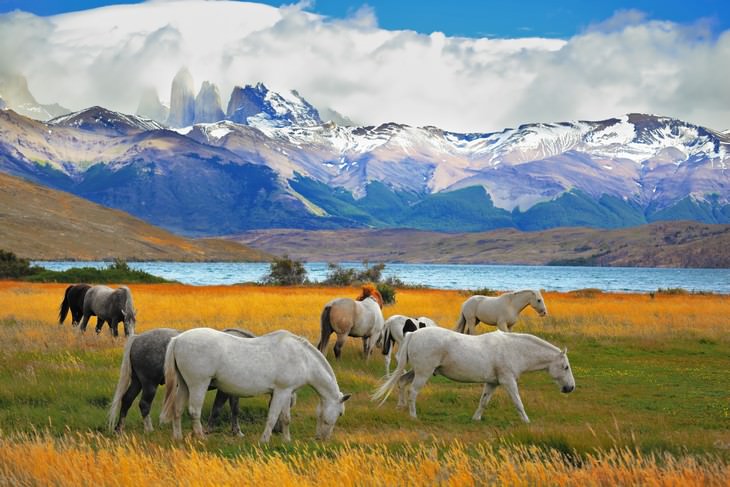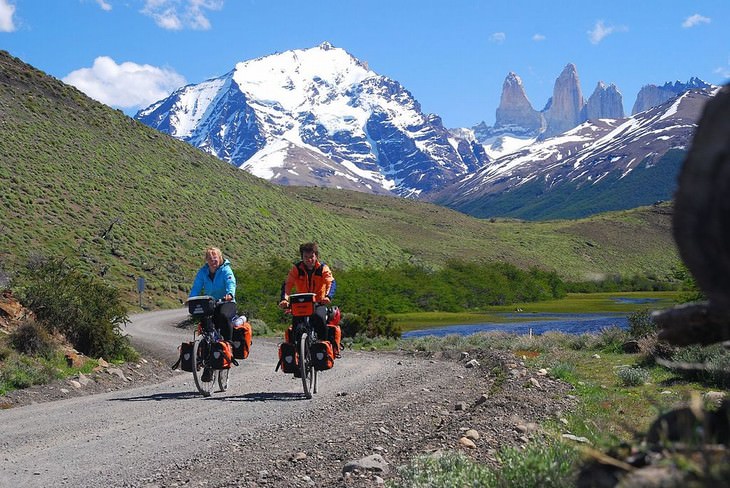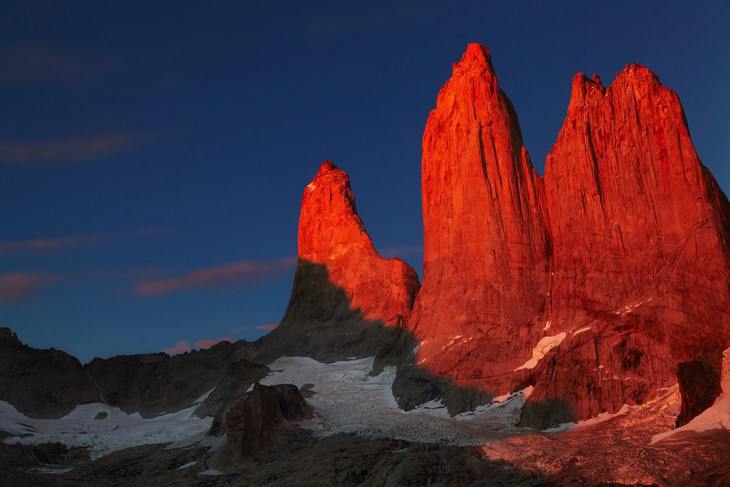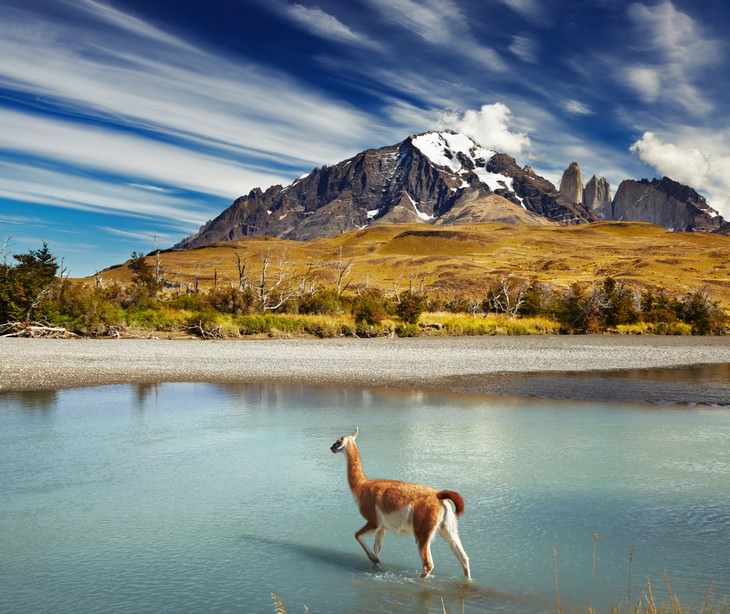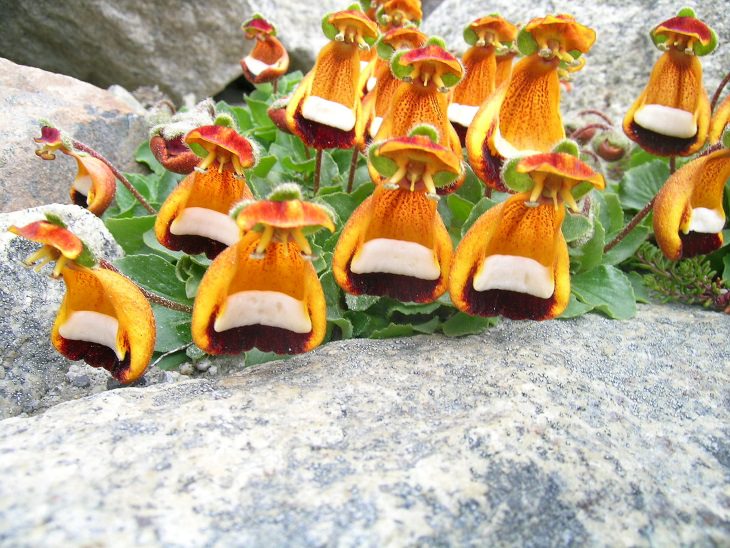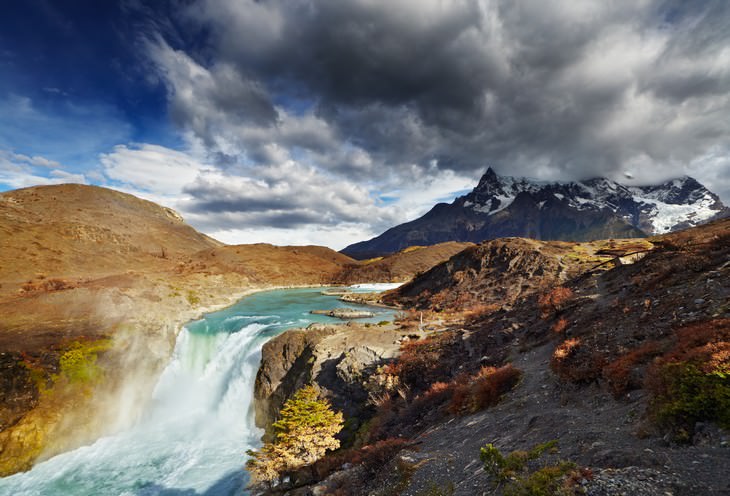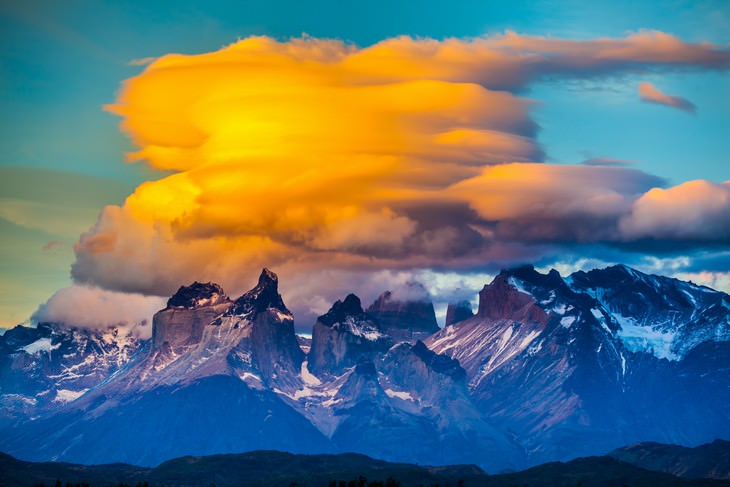About the Park
Torres del Paine National Park covers 181,414 hectares of Patagonian land and includes a massive variety of landscapes ranging from grasslands to subpolar forests and even glaciers. The name of the park can be roughly translated as ‘blue towers’ after the hallmark mountain range resembling a series of towers.
The park was founded in 1959 in an attempt to preserve the indigenous nature and wildlife of the area, and it is now one of the largest national parks in Chile (although, technically, part of the park is situated in Argentina).
Tourism and Hiking Trails
252,000 tourists visit Torres del Paine National Park each year, and it has been estimated that around half of these visitors come from abroad. You can get to the park by car or using public transportation; the nearest airport is The Punta Arenas airport situated around 230 miles from the park.
The best time to visit Torres del Paine is between September and April, which coincides with the southern spring to autumn season. The park is equipped with clearly defined hiking trails, campsites, and lodges called ‘refugios’ spaced out throughout the trail.
Visitors can rent hiking equipment, stay at one of the refugios or, if you’re looking for a more convenient travel experience, you can stay in one of the nearby hotels. There are 3 main hiking routes, which visitors can enjoy either on foot, by bike or on horseback (although some sections are reserved for hikers only).
The 3 main routes are:
- A day-long trip to the Torres del Paine mountains.
- The medium-length "W" route that takes around 5 days.
- The longest trek is the "O" route that takes 7-9 days.
But before you start planning a trip, here are the top things to see at Torres del Paine National Park:
1. Glacier Grey
Apart from being a beautiful sight, Grey Glacier is an opportunity to go on an ice hike and even to go kayaking in the lake located right next to the glacier that carries the same name. For those who are ready to spend a bit more on the experience, there is even an option to take a boat ride on Lake Grey.
2. Torres del Paine
One of the main reasons why tourists arrive at the park each year is to hike around the Torres del Paine, the centerpiece of the park. These magnificent rock formations rise tall in the sky and have a turquoise-colored lake at their base. It’s best to arrive at the towers at dawn when the setting sun turns the towers orange-red and they look especially majestic against the blue sky.
3. Admire the Plant and Animal Life
The highlight of the park is its endemic flora and fauna. During your trip through the grasslands, you will be able to meet a variety of animals in their natural habitat, including guanaco, a distant relative of the llama seen crossing the Paine river in the picture above. Other animals include pumas, condors, armadillos, foxes, flamingos, and even Darwin's rhea, a species of ostrich discovered by Charles Darwin himself on his expedition to Torres del Paine.
These birds have fluffy grey feathers often used to manufacture dusters, which almost drew the species to extinction in the past, although, admittedly, their meat was also used by the Gauchos, which is the Patagonian version of a cowboy. The plant life is also quite outstanding, with several types of orchids and other unique-looking flowers growing naturally on the park’s premises. One of these species, Calceolaria uniflora, can be seen in the picture above.
4. Salto Grande
Yet another attraction to take note of in Torres Del Paine is the Salto Grande waterfall. It lies on the Paine River situated not far from the famous Cuernos del Paine, which ensures a majestic view for visitors. Keep in mind that the waterfall creates incredibly strong winds, which is especially refreshing on a hot day, but it also means you should bring a windbreaker on your hike to Salto Grande.
5. Cuernos del Paine
The last, but not least adventure you should consider is hiking to Cuernos del Paine. This mountain massif look like sharp horns, for which it got its name ('cuerno' means 'horn' in Spanish). The magnificent rock formation was created as the soil and sediment eroded from the mountain and the sharp hard granite plates were exposed, which gave the mountains their sharp look.
The best views of this magnificent mountain range can be seen on a rather short hike from Pudeto boat stop through Nordernskjöld lake.
Bonus! Admire the magnificent landscapes of Torres Del Paine in this HD video

